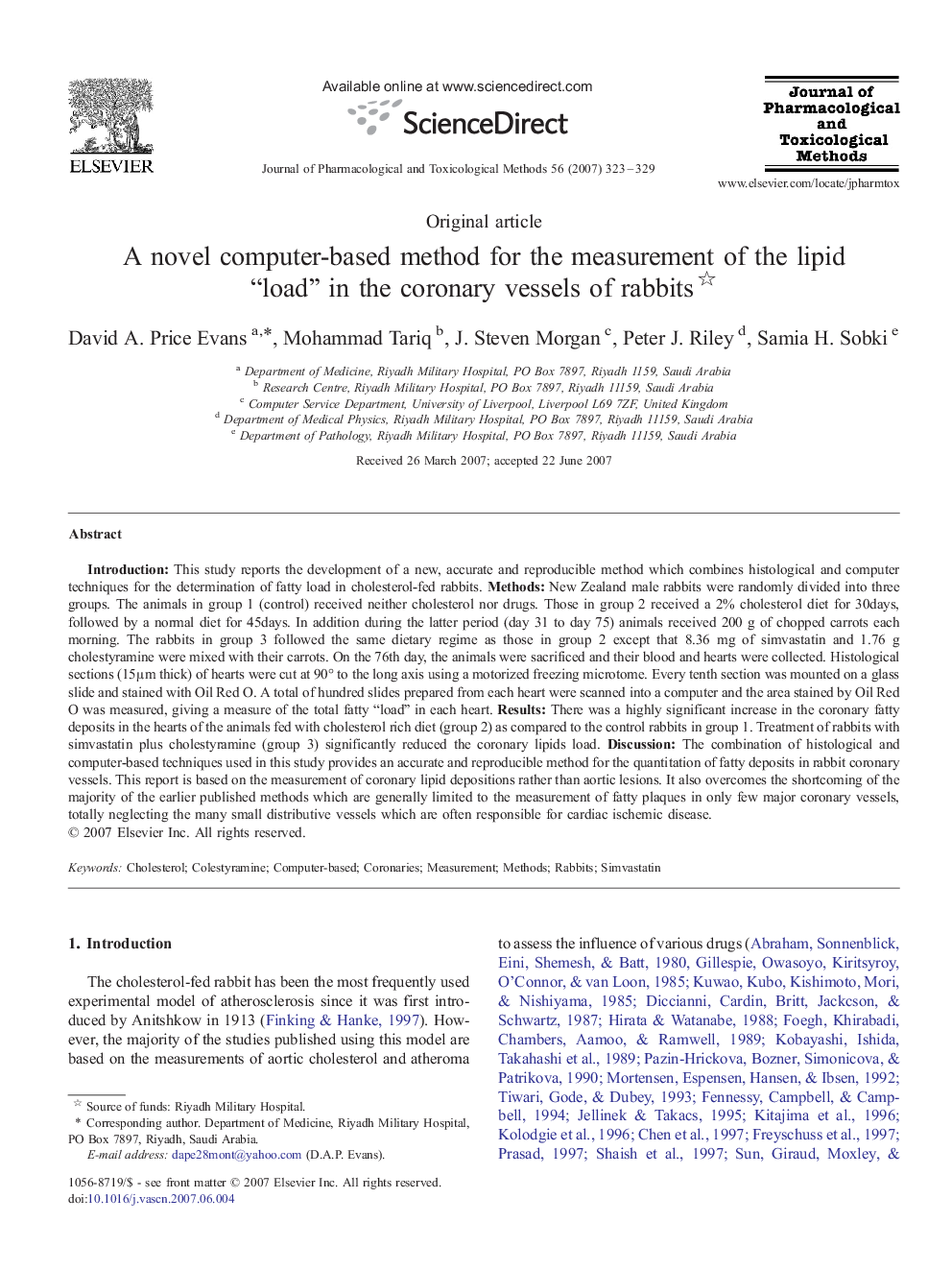| Article ID | Journal | Published Year | Pages | File Type |
|---|---|---|---|---|
| 2549716 | Journal of Pharmacological and Toxicological Methods | 2007 | 7 Pages |
Abstract
Introduction: This study reports the development of a new, accurate and reproducible method which combines histological and computer techniques for the determination of fatty load in cholesterol-fed rabbits. Methods: New Zealand male rabbits were randomly divided into three groups. The animals in group 1 (control) received neither cholesterol nor drugs. Those in group 2 received a 2% cholesterol diet for 30days, followed by a normal diet for 45days. In addition during the latter period (day 31 to day 75) animals received 200 g of chopped carrots each morning. The rabbits in group 3 followed the same dietary regime as those in group 2 except that 8.36 mg of simvastatin and 1.76 g cholestyramine were mixed with their carrots. On the 76th day, the animals were sacrificed and their blood and hearts were collected. Histological sections (15μm thick) of hearts were cut at 90° to the long axis using a motorized freezing microtome. Every tenth section was mounted on a glass slide and stained with Oil Red O. A total of hundred slides prepared from each heart were scanned into a computer and the area stained by Oil Red O was measured, giving a measure of the total fatty “load” in each heart. Results: There was a highly significant increase in the coronary fatty deposits in the hearts of the animals fed with cholesterol rich diet (group 2) as compared to the control rabbits in group 1. Treatment of rabbits with simvastatin plus cholestyramine (group 3) significantly reduced the coronary lipids load. Discussion: The combination of histological and computer-based techniques used in this study provides an accurate and reproducible method for the quantitation of fatty deposits in rabbit coronary vessels. This report is based on the measurement of coronary lipid depositions rather than aortic lesions. It also overcomes the shortcoming of the majority of the earlier published methods which are generally limited to the measurement of fatty plaques in only few major coronary vessels, totally neglecting the many small distributive vessels which are often responsible for cardiac ischemic disease.
Related Topics
Health Sciences
Pharmacology, Toxicology and Pharmaceutical Science
Pharmacology
Authors
David A. Price Evans, Mohammad Tariq, J. Steven Morgan, Peter J. Riley, Samia H. Sobki,
